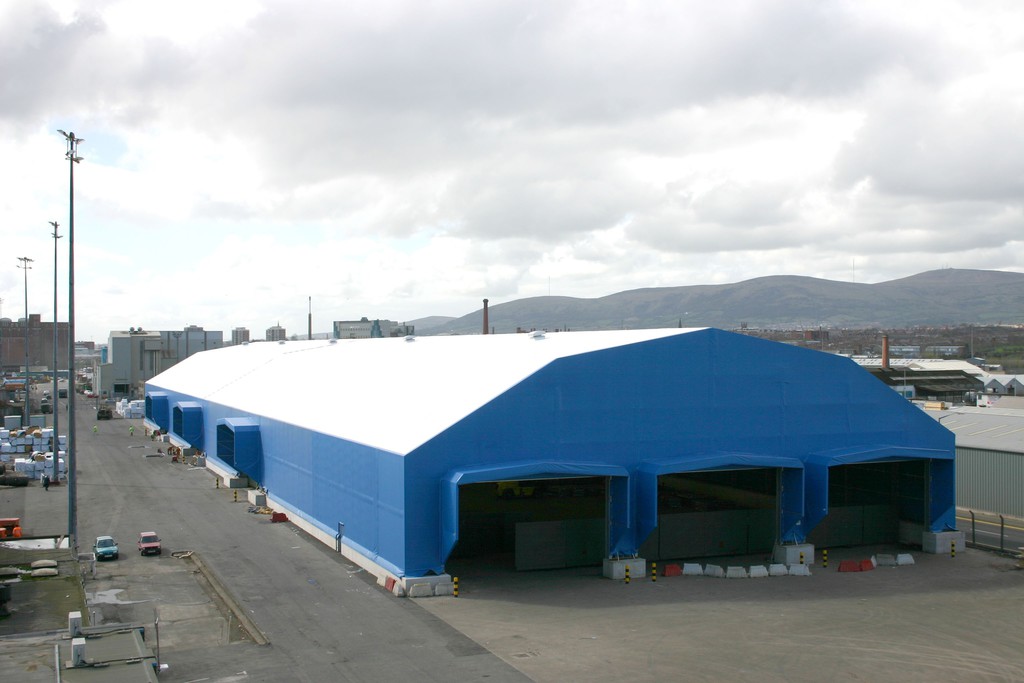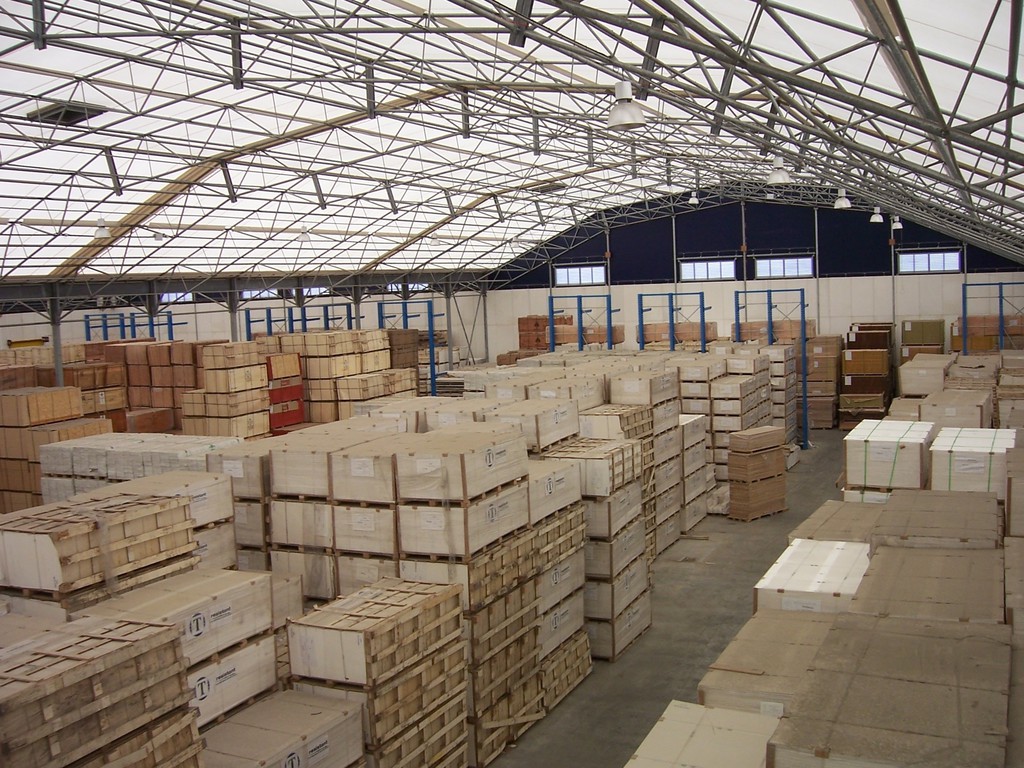| Home> | Warehouse Storage | >Bespoke structures | >Supporting UK ports |
| Home> | Industry Sector | >Rail, ports & transport | >Supporting UK ports |
| Home> | Warehouse Storage | >Warehouse storage | >Supporting UK ports |
Supporting UK ports
14 June 2018
Rubb structures play a big part in making sure cargo is kept secure and protected from the elements.

Rubb port structures can be custom designed to meet a variety of bulk handling operations. Modular, temporary and semi-permanent fabric buildings are a cost effective alternative to traditional warehouses.
These design advantages allow Rubb structures to easily adapt to the changing requirements of the end user in a busy port environment. Large clear spans and high translucent ceilings provide a bright, efficient working spaces.
Rubb storage warehouses are built to UK building codes but are fully relocatable, extendable and moveable to meet changing needs.

The UK ports industry of about 120 commercial ports handles 95% of UK imports and exports.
365 days a year, 24 hours a day, these ports are active with the processing and storage of freight. Custom designed warehouses play a vital part in supporting the smooth operations of UK ports across the whole country.
SEE MORE STORAGE SOLUTIONS HERE
- Agile storage solutions
- Modular structure assists strategic salt storage priority
- Ports growth leads to temporary building opportunities
- Agile warehouse solutions for a post-Brexit world
- What does the surge in online shopping mean for storage?
- Promoting energy efficiency
- Port of Tilbury revamps 30-year-old warehouse
- Pressure mounts on UK ports to enhance infrastructure capacity ahead of Brexit
- 3PL expands portside storage
- Review, refurbish, regenerate











/GRABOMATIC LOGO-tn.jpg)
















